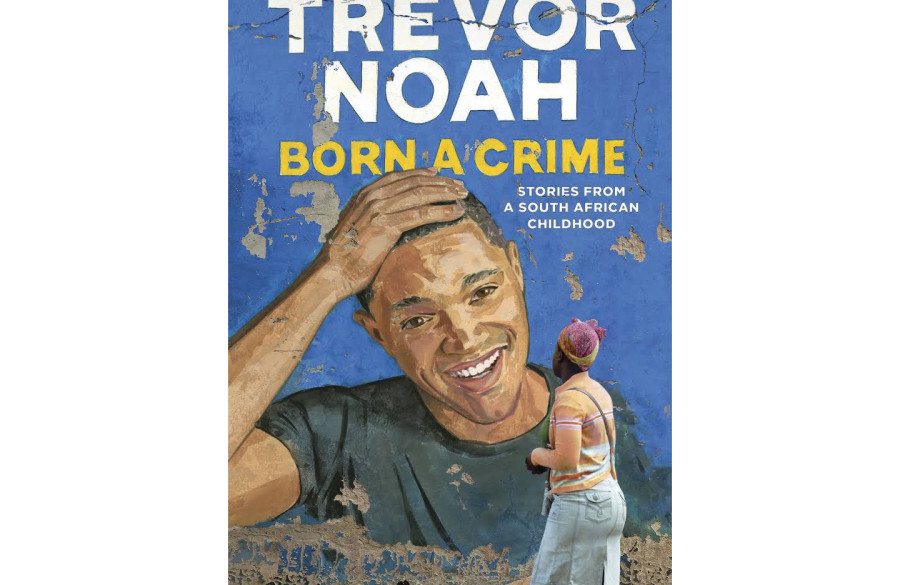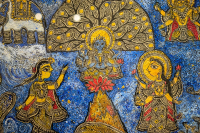Culture & Lifestyle
Struggle, resilience and comedy
‘Born a Crime’ by Trevor Noah unveils the harsh realities of growing up mixed-race in apartheid-era South Africa, blending heartrending vulnerability with humour.
Indra Dhoj Kshetri
For many of us, the struggle of South African freedom is about Nelson Mandela; his odyssey of solitary confinement, and his undeterred determination to organise his people to fight against the cruel apartheid regime. History textbooks even evoke a consolatory feeling towards the white regime for giving freedom to the South Africans without much bloodshed. This was evident when the Nobel Peace Committee dared to share the 1993 Nobel Peace Prize between the oppressed—Mandela and the oppressor—Frederik Willem de Klerk.
However, very few people know what living under apartheid was like or how the colonial and apartheid regimes actually worked. Reading Trevor Noah’s poignant tale of childhood through adolescence, though it chronicles life at the waning days of the apartheid regime, still gives us a glimpse of how the apartheid worked. When the colonialists, the Dutch East India Company, set foot in the Cape of Good Home in 1652, they established a trading colony, Kaapstad, later known as Cape Town. When the British took over the Cape Colony, the descendants of the original Dutch settlers moved inland and developed their own language, culture, and customs, eventually becoming the Afrikaners—the white tribe of Africa.
As the British Empire fell, the Afrikaners reclaimed South Africa as their rightful inheritance, and this is when they built the most advanced system of racial oppression—the removal of the natives and driving them to urban slums coupled with slavery and segregation. This is when they enacted the Immortality Act, 1927 which prohibited any intercourse between Europeans and natives, to uphold the sanctity of their race. This is why Noah's birth was itself a crime—he was born to a secretive Swiss businessman and a South African flamboyant woman of the Xhosa tribe.
For this reason, he was forbidden from his childhood—as his peers and cousins roamed through the streets, he was incarcerated in his mother’s apartment or grandparents’ driveway. He could not meet his father in public and as he had a different skin colour, his mother had to tread with immortal fear of being arrested for the crime which could land her in prison for up to four years.
This had a profound impact on Noah’s life. While physical restrictions were a reality, the impact was deeper on his mental health. He had to live with the eternal doubt about where he belonged. He was not black, definitely not white. He was light-skinned but not defined as “coloured” which referred to a racial classification of individuals born out of intercourse between white European men and South African natives, particularly Khoisan women. The coloured population was lesser than the white minority but higher in social and legal status than the Black majority. Noah, being born after criminalising interracial marriages, was an outcast even to the coloured category.
Noah explores the contours of life under apartheid and new democracy, the culture, and the conflicts between different tribes and races through the eyes of an innocent yet mischievous child or a naughty adolescent kid. The narrative has moments of heartrending vulnerability and uproarious humour, showcasing Noah’s ability to evoke deep emotions while providing an engaging read. His storytelling oscillates between moments of laughter, contemplation, and big realisations about the consequences of his family’s actions in a society fractured by race and oppression.
A living eulogy to his mother
Central to the narrative is Noah’s admiration and respect for his mother, Patricia Nombuyiselo Noah. Her resilience and sacrifices, striving against the constraints of poverty and violence, form a significant part of the book. Despite facing the brunt of patriarchal violence, she persevered, securing opportunities for her son, and striving to create a better life for her family.
Patricia, rather than working at farms or as a maid, ran from her home and took a secretarial course, which was not an option presented to her. As the apartheid regime started loosening some restrictions, she got a secretarial job at a multinational pharmaceutical company. This led to one after another white-collar job which even many South African men didn’t think to have within their reach. This enabled her to send Trevor to better-off private schools; and take him to well-off suburbs and parks just to give him the dream of a better, freer world.
The book also sheds light on pervasive violence and crime plaguing South Africa, both during the apartheid era and in the aftermath of democracy. It highlights how patriarchal norms often enable and protect abusers, with Noah’s own mother enduring violence at the hands of her husband, yet receiving little protection or justice from the authorities. Coupled with patriarchy and the police’s overt approval of it, women continued to be targeted by violence at home and in public places. For example, the police ignored Noah’s mother’s numerous complaints of severe beating by her abusive husband, Abel. When he actually shot her in 2009, the court invoked his previous clean record to let him walk free.
The book predominantly covers Noah’s life until his early adulthood, notably omitting details of his early 20s when he was pursuing a progressively successful journey into the colourful world of entertainment, becoming a comedian, a radio jockey and a television host. It culminates with a major realisation following a near-fatal attack on his mother. This serves as a catalyst for Noah, prompting a deeper understanding of his mother’s struggles and sacrifices in shaping the person he has become.
Ultimately, the book stands as an ode to Noah’s South African heritage, a touching tribute to his mother’s resilience, a stark commentary on the apartheid era and its aftermath, and a call for collective efforts toward peace and equality, especially for the women of South Africa. Noah’s journey, from a childhood born out of crime to international success, offers insights into the resilience of the human spirit in the face of adversity.
Born a Crime
Author: Trevor Noah
Year: 2016
Publisher: Spiegel & Grau




 15.69°C Kathmandu
15.69°C Kathmandu















